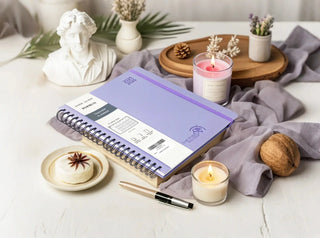Have you ever stood in your classroom a few days before school starts, staring at a half-decorated bulletin board and an empty lesson planner, thinking: "Where do I even begin?" You’re not alone. The back-to-school transition can feel like a whirlwind—especially after a summer spent recovering from burnout.
But here's the truth: You don’t have to do everything at once. With a clear weekly plan, you can step into your classroom feeling calm, confident, and ready to inspire.
This guide is your week-by-week checklist to bring structure, intention, and even joy to your back-to-school prep. Let’s break it down.
Week 1: Reflect and Recharge
(4 Weeks Before School Starts)
Before you dive headfirst into the new school year, it's crucial to take a step back and reflect on the previous year. What worked well? What could use some improvement? Jot down your thoughts, successes, and areas of growth - this will serve as a valuable roadmap as you plan for the upcoming semester.
Next, it's time to recharge those batteries. Whether it's a weekend getaway, a staycation, or simply carving out time for self-care, make sure to prioritize your own well-being. A refreshed and rejuvenated teacher is a more effective one, so don't skimp on this step.
To-do list:
-
Reflect on last year. What worked? What didn’t? Jot it down in a journal or notes app.
-
Set 2-3 big goals for the year. Think personal and professional: "More student engagement" or "Leave school by 4:30 PM."
-
Choose your planner or digital planning system.
-
Block off time each week for planning and self-care.
Don’t underestimate the power of clarity. This week is about setting intentions, not checking off a huge list.
Week 2: Curriculum & Calendar (3 Weeks Before School Starts)
Now that you've had a chance to reflect and recharge, it's time to dive into the nitty-gritty of organization. This week, build your academic skeleton: the core structure you’ll flesh out later.
To-do list:
-
Review your school calendar and add key dates to your planner.
-
Map out the first semester: major units, assessments, holidays.
-
Start drafting your pacing guide.
-
If you teach multiple grades or subjects, create separate folders (digital or physical).
-
Contact any co-teachers or support staff.
Keep it high-level! You’re not planning every lesson yet—just sketching the big picture.

Week 3: Classroom Setup (2 Weeks Before School Starts)
This is the fun (and Instagrammable) week—but it can also be a rabbit hole. Make it meaningful, not just aesthetic.
To-do list:
-
Clean and organize your classroom.
-
Arrange desks for flow and collaboration.
-
Post visuals that align with your classroom culture (rules, growth mindset, schedules).
-
Set up key stations: turn-in tray, absent work, supplies.
-
Prep student folders or notebooks.
Need inspiration? Websites like Edutopia offer great classroom setup ideas grounded in educational research.
Week 4: First Week Game Plan (1 Week Before School Starts)
This week is about locking in your opening moves—those first impressions matter more than you think.
To-do list:
-
Plan your first week of lessons. Focus on routines, building relationships, and setting expectations.
-
Create an "About Me" slideshow or welcome letter.
-
Prep icebreakers and community-building activities.
-
Print or organize materials: class lists, seating charts, syllabus.
-
Set up your tech: classroom website, LMS, or communication apps.
Ask yourself, "What kind of classroom culture do I want?" Then design your first week to plant those seeds.
Final Weekend: Rest and Reset
You’ve done the work. Now give yourself permission to rest. Really.
To-do list:
-
Review your checklist one last time—lightly.
-
Meal prep or organize your first week’s outfits.
-
Do something joyful: go to a movie, hike, have dinner with friends.
-
Get a full night’s sleep.
You don’t have to be perfect to be prepared. You just need to show up with intention.

Final Thoughts: You’re More Ready Than You Think
Every teacher has those "do I have everything?" moments. That’s okay. Planning is not about being flawless—it’s about creating space for flexibility, presence, and connection.
By breaking down your prep week by week, you protect your energy and build a year that works for you too.
So take a deep breath, grab your planner, and know this: you’re showing up for your students, and that already makes you a hero.
If this checklist helped you, consider sharing it with a fellow teacher who could use a little clarity before the chaos. You've got this!




